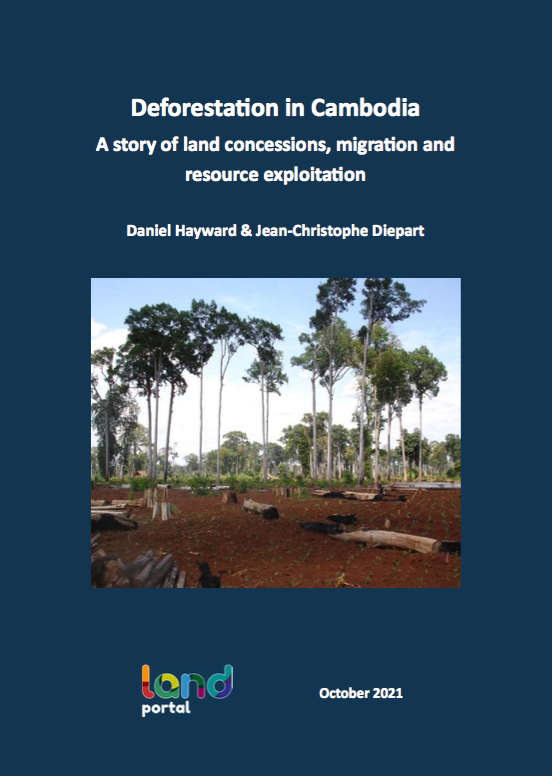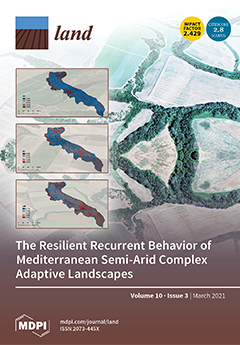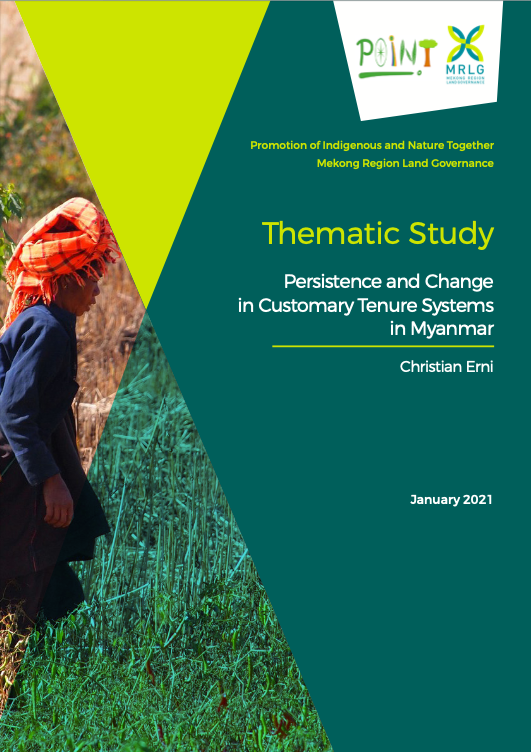“Why would anyone leave?”: Development, overindebtedness, and migration in Guatemala
Over the past two decades, policymakers have expressed considerable optimism about the capacity of international development to curb transnational migration, yet there is a dearth of research examining how and under what conditions development interventions impact migration decisions. Enlisting a case study approach in the Maya-K’iche’ community of Almolonga, this article examines divergent meanings and practices of “development” and its impact on the migratory aspirations and outcomes of Indigenous families in Guatemala.
Deforestation in Cambodia: A story of land concessions, migration and resource exploitation
This document has been initially released online as a Land Portal data story. You can find it online here.
Expanding Exotic Forest Plantations and Declining Rural Populations in La Araucanía, Chile
Chile has embraced the expansion of monoculture forest plantations of exotic Monterey pine and eucalyptus as part of its development strategy. While forestry is considered financially successful and meets sustainability objectives, the increase in forest plantations across southern Chile has received harsh critiques for exacerbating conflict over Indigenous land rights, producing negative environmental outcomes, and increasing poverty and inequality. There are also claims that forest plantation expansion has led to an abandonment of the countryside.
Reversing Channels and Unsettling Binaries: Rethinking Migration and Agrarian Change under Expanded Border and Immigration Enforcement
Unauthorized migration under global regimes of border and immigration enforcement has become more risky and costly than ever. Despite the increasing challenges of reaching, remaining in, and remitting from destination countries, scholarship exploring the implications of migration for agricultural and environmental change in migrant-sending regions has largely overlooked the prevalent experiences and consequences of “failed” migration.
Persistence and Change in Customary Tenure Systems in Myanmar
Based on a broad review of the existing documentation, the study describes the diversity of customary tenure systems in various regions of Myanmar; it looks at what they have in common and how they differ. It investigates the processes that affect or weaken the community jurisdiction over their lands and resources. It is intended as a resource for policymakers who are looking at recognizing and protecting the customary rights of rural communities.
Gendered Migration and Agroforestry in Indonesia: Livelihoods, Labor, Know-How, Networks
Migration connects land use in areas of origin with areas of new residence, impacting both through individual, gendered choices on the use of land, labor, and knowledge.
Agri-Food Land Transformations and Immigrant Farm Workers in Peri-Urban Areas of Spain and the Mediterranean
Spain is a global hotspot of transformations of agri-food land systems due to changing production intensity, diets, urbanization, market integration, and climate change. Characteristic of the Mediterranean, these expanding intersections with the migration, livelihoods, and food security strategies of immigrant farm workers urge new research into the “who,” “how,” and “why” questions of the transformation of agri-food land systems. Addressing this gap, we communicate preliminary results from field research in the Granada and Madrid areas.
Cocoa Production and Forest Dynamics in Ivory Coast from 1985 to 2019
The cocoa economy of Ivory Coast started in the eastern part of the country in the 1970s and spread to the central-western and then south-western regions. For nearly a decade, it has been in the West of Ivory Coast with a population increase caused by large waves of migration. This study aims to determine different factors explaining dynamics of the cocoa economy from the East to West of Ivory Coast. The method adopted consisted of processing Landsat images from 1985–2018 and an individual survey of 278 heads of households.
Sand and Dust Storms in the Middle East and North Africa (MENA) Region: Sources, Costs, and Solutions
Dust storms are capable of transporting sediment over thousands of kilometers, but due to the Middle East and North Africa (MENA) region’s proximity to the Sahara Desert, the region is one of the dustiest in the world. While natural sources such as the Sahara are the main contributors to dust storms in MENA, land-use changes and human-induced climate change has added anthropogenic sources as well.






